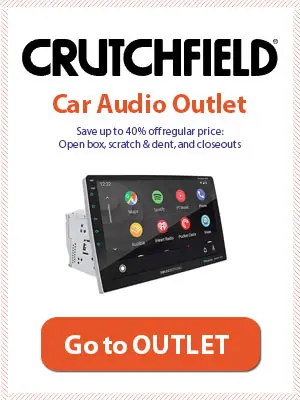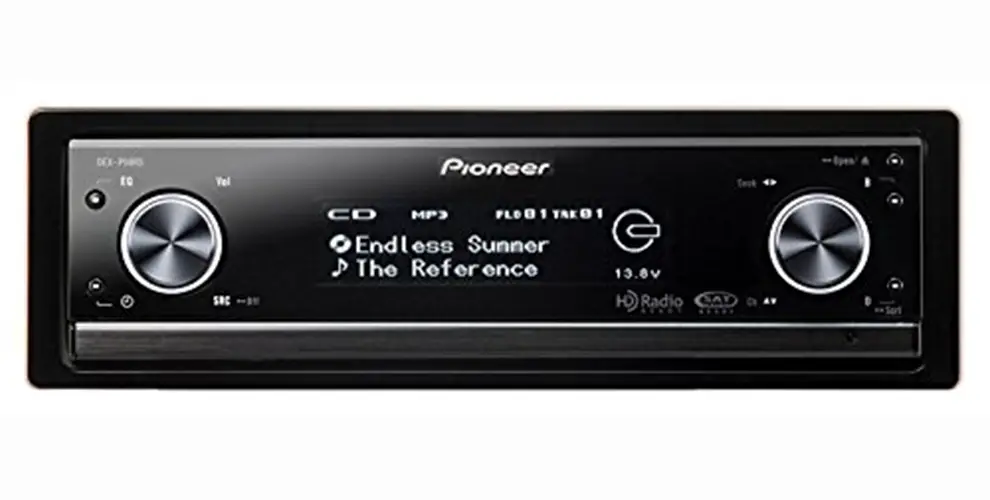In this post, the experts at 99carstereo.com are going to provide an overview of the differences between single DIN and double DIN sizes, as well as answer a question we hear from our visitors all the time: “Is it possible to fit a single DIN unit into a double DIN-sized slot?”
Table of Contents
To get things rolling, let’s break down the primary differences between a single DIN and double DIN car stereo; as you may have already guessed, a double (or two) DIN car head unit is larger than a single (or one) DIN unit, but most vehicles’ dashboards are built to house one or the other.
To put this in a visual perspective, typical double DIN head units appear as those larger almost “all-screen” systems that normally boast navigation programs and a host of other controls, while single DIN units come across like your typical everyday car stereo arrangement.
Single DIN and double DIN are the two primary stereo sizes when it comes to car audio, and the good news is that it’s quite simple to determine what type a car or truck has.
If a car stereo installation shop suggested you purchase a double-DIN unit instead of a single DIN variant, it can be reasoned that this is because your vehicle came with that type of stereo from the manufacturer – and replacing it with the same type is the best way to upgrade your car audio system.
Single DIN
Single DIN cutouts for head units generally feature a front face that measures (approximately) 7 x 2 inches (180 x 50 millimeters), while double DIN cutouts generally feature a face that most likely measures 7 x 4 inches (the front should be of the same width but it will be twice as tall).
Fascinatingly, the reference to “DIN” comes from the name of a standards organization in Germany – Deutsches Institut fur Normung – credited with setting the actual standard for creating car stereos; to this day, manufacturers of vehicles and mobile electronics refer to it when building head units. This standard was adopted by the International Standards Organization as ISO 7736, and automakers have used it to create stereos for virtually all brands of vehicles from all over the world.
Double (or two) DIN
The main reason why mobile audio experts refer to a certain cutout as a double (or two) DIN size is because of a head unit of this type measures to the specifications of two single DIN stereos – stacked together like two bricks.
To be specific, a double DIN car stereo unit measures 150 millimeters in length, but at 100 millimeters of height, it is twice as tall as its counterpart (as we alluded to above).
Perhaps even more important is the discussion about depth, as cars do not share the same type of head unit receptacle; the fact that vehicle manufacturers produce head units with varying depths means that installers must take care to note if a car has a particularly smaller receptacle for holding a unit.
The primary differences between single DIN and double DIN stereos
Features
A double DIN unit usually boasts more features than its single DIN counterpart, and the primary reason for that is its larger size (this typically encompasses a larger touchscreen that makes it easier to use the device).
Other features of double DIN units with regard to beneficial features include more storage space, easier controls, DVD players with digital displays, HD video screens and advanced connectivity.
Usability
This is the main difference between these two types of head unit sizes; a double-DIN unit comes with a plethora of smart options such as a camera system and smartphone integration, and this means it offers a more intuitive user experience.
On the flip side, single-DIN units are still practical, and some models offer a good assortment of features.
Installing a Single-DIN Unit into a Double DIN Slot: Is it Possible?
Here’s something we hear all the time from visitors to our site…they’re thinking of replacing their factory car stereos, but their head units are of the bigger double DIN variety with large touchscreens and other controls.
Complicating matters is the fact that they often wish to install a single DIN stereo into the double DIN slot, and are usually under the impression that this simply cannot be done – if only for the sake of sheer appearance in terms of what their dash would look like.
When installing a single DIN head unit into a space reserved for a double-DIN unit – which is possible, and which we will get into below – there are kits available that ultimately leave additional room in your dash, which can be customized for random cubby/storage space or be utilized for sound-shaping add-ons like graphic equalizers (EQs).
Yes, installing a single DIN radio into a Double DIN space is possible
Since, as we already covered in some detail already, a single-DIN space is smaller than that for a double DIN unit, a mounting bracket/kit is required to fill up that aforementioned extra space in the console.
These brackets can be found for less than 10 bucks at most car stereo shops, so don’t worry about overly unnecessary expenditures during the installation process.
Items Needed
- Your new single DIN head unit
- A wrench
- A flathead screwdriver
- Your mounting bracket/kit
First Stage: Disconnecting the Battery
As a primary step always recommended by experts before beginning any mobile audio project, this will prevent any shorts from occurring.
Second Stage: Accessing the Head Unit
To access the stereo you’re attempting to replace, you are going to have to remove your dashboard’s panel by prying it off using a flathead screwdriver. This can be accomplished more effectively by putting the screwdriver between the head unit and dash and placing some gentle pressure to pop it off.
Third Stage: Pulling Out the Double DIN Head Unit
In this step, you are going to unscrew the double DIN unit, again using the screwdriver (or a wrench), and upon pulling it out, you’ll detach all the wires connected to it.
Fourth Stage: Getting the Single DIN Head Unit In
At this point, you’re going to want to get your single-DIN radio into the mounting bracket (which should easily fit if you purchased the right one) and from there connect your vehicle’s wires or wiring harness to the new unit. Push the new unit into the mounting bracket before securing the bracket using the screws from your original unit, replace the dashboard panel, reconnect the battery and turn your vehicle’s ignition on.
The following videos will give you more of a hands-on explanation of how all this comes together:
Conclusion
Many car owners look forward to upgrading their vehicle’s stereo, as it presents an opportunity to update an entire entertainment system and perhaps even enhance their dashboard’s tech.
If you have not been able to understand the differences between single and double DIN sizes or the features you should be looking for in a new head unit, we hope this post has shed some light – on your system as a whole.


